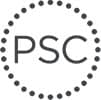At the Plastic Surgery Clinic of Chicago, facelifts are among the sought-after procedures for restoring a youthful, rejuvenated appearance. Led by board-certified plastic surgeon Parit A. Patel, MD, MBA, FACS, a recognized expert in facial aesthetic surgery, our practice remains at the forefront of advanced techniques to deliver natural, long-lasting results.
- WHAT IS A FACELIFT?
- PROCEDURES COMMONLY COMBINED WITH A FACELIFT
- AM I A GOOD CANDIDATE FOR A FACELIFT?
- WHAT HAPPENS DURING A FACELIFT CONSULTATION?
- HOW IS A FACELIFT PERFORMED?
- RECOVERY AFTER A FACELIFT
- POTENTIAL ASSOCIATED RISKS OF A FACELIFT
- WHAT IS A MINI FACELIFT?
- HOW MUCH DOES A FACELIFT COST IN CHICAGO?
- KEY BENEFITS OF A FACELIFT
- WHY CHOOSE THE PLASTIC SURGERY CLINIC OF CHICAGO?
- BOOK YOUR FACELIFT CONSULTATION TODAY
- FAQS ABOUT FACELIFT


Self-verified patient of Dr. Parit A. Patel
“I had a facelift procedure by Dr. Patel and I am very happy with my results. I was worried about looking too pulled back and fake looking. Dr. Patel assured me that with his technique, I would look more youthful without looking like I had surgery. He did not oversell but he definitely over delivered. I am grateful.”
WHAT IS A FACELIFT?
As we age, facial tissues lose volume and descend, leading to wrinkles, sagging skin, and jowls. A facelift (rhytidectomy) restores a more youthful, balanced appearance by lifting and tightening the lower two-thirds of the face and neck.
The procedure involves precise incisions along the hairline, around the ears, and sometimes under the chin. Underlying tissues are repositioned, excess skin is removed, and the remaining skin is tightened for a natural, long-lasting result. Fat grafting may also be performed to restore lost volume, and a neck lift is sometimes combined for comprehensive rejuvenation.
A facelift effectively smooths deep wrinkles, defines the jawline, and reduces sagging, often helping patients look up to ten years younger with natural, refreshed results.
Procedures Commonly Combined With a Facelift
A facelift may be performed along with other surgical procedures to achieve better results. A neck lift addresses neck sagging, while eyelid surgery (blepharoplasty) enhances a youthful look by removing excess skin and fat from your lower and/or upper lids. A brow lift may also be performed to get rid of wrinkles and rejuvenate your upper facial region.

AM I A GOOD CANDIDATE FOR A FACELIFT?
You may be a good candidate for a facelift if you are experiencing any of the following three common facial-aging problems:
- Deflation: As we age, we lose facial fat volume. This is usually most noticeable as hollowness just below the cheeks or the descent of fat in the jaw, neck, or other parts of the face.
- Radial Expansion: Facial ligaments weaken over time, and the attached tissue separates, causing a loss of definition in the jawline, prominent smile lines around the mouth, and more pronounced jowls.
- Neck Sagging: As muscles loosen, fat accumulates under the chin. At the same time, the skin loses elasticity, causing fullness around the jaw and neck.
Excellent facelift candidates are non-smokers. If you are considering a facelift, you must stop smoking several weeks in advance of the procedure and continue to avoid smoking during the recovery process. Smoking can damage skin health and increase the risk of complications during and after surgery.
There is no way to definitively stop the aging process. However, facial rejuvenation can slow it down and restore you to a more youthful version of yourself. While it is not an anti-aging cure, a well-performed facelift can greatly rejuvenate the face and neck and give you a much younger-looking appearance.
What Happens During a Facelift Consultation?
Always consult with Dr. Patel before deciding to undergo a facelift. Make sure you understand the potential risks and recovery period associated with the procedure. If looking younger is your goal, Dr. Patel may be able to recommend other procedures that, when coupled with a facelift, will help restore balance and harmony to your face and body.
At the Plastic Surgery Clinic of Chicago, we thoroughly review your medical history, including any allergies, medications you are currently taking, and procedures you have had performed. We then perform an examination, speak with you about your expectations, and provide you with an extensive overview of the procedure.
HOW IS A FACELIFT PERFORMED?
Facelift techniques vary based on the patient’s goals, but the procedure generally begins with general anesthesia for comfort.
Discreet incisions are made around the front and back of the ears and along the hairline to minimize visible scarring. Beneath the skin, facial tissues are lifted, reshaped, and repositioned for a more youthful contour.
To restore lost volume, fat cells are harvested from areas like the hips or thighs, purified, and strategically transferred to the face, neck, and chin. This process helps correct deflation and enhance facial balance. The cheeks are lifted to a more youthful position, with additional fat transfers used as needed to create natural fullness and definition.
Depending on your individual needs, Dr. Patel may also use wrinkle-reduction or skin-resurfacing techniques during the procedure. Depending on the type of facelift performed, drains may be placed. Lastly, the incisions are closed with skin sutures.
RECOVERY AFTER A FACELIFT
As an outpatient procedure, facelift patients are released on the day of surgery to return home. They should keep their heads elevated for the first night and use ice packs to reduce post-operative swelling and bruising in the area. The face will be bandaged after a facelift, but Dr. Patel can remove the bandage within a day or two after surgery.
Sutures are typically removed within a week, but following your doctor’s post-operative instructions and attending follow-ups is essential.
Most patients can resume normal activities within two weeks, though swelling may take two to three months to fully subside. The final results become more visible as healing progresses.
Plan for one to two weeks off work and avoid strenuous activities, including exercise, for three to four weeks. You can shower after one to two days, with specific guidelines provided for safe bathing during recovery.
POTENTIAL ASSOCIATED RISKS OF A FACELIFT
Potential risks include infection, hematoma (blood clot), facial nerve weakness, fluid accumulation, and skin discoloration. Consistent aftercare can prevent these risks.
Always make sure that the surgeon performing the procedure is board-certified by the American Board of Plastic Surgery and that the surgery is being carried out in an accredited surgical facility.
All surgical procedures performed by the Plastic Surgery Clinic of Chicago are performed at top Chicago hospitals and CMS or AAAASF-certified surgical centers for safety.
What Is a Mini Facelift?
A Mini-Facelift is a modified version of a facelift, using smaller incisions around the hairline to lift the skin in the lower half of the face and eliminate wrinkles and sagging skin. Chicago board-certified plastic surgeon Dr. Parit Patel will assess your aesthetic needs and tell you if a full facelift, mini-facelift, or neck lift is right for you.
HOW MUCH DOES A FACELIFT COST IN CHICAGO?
The cost of this type of procedure depends largely on the clinic’s location, the surgeon, and the patient’s needs. According to the American Society of Plastic Surgeons, the average cost of a facelift is around $7,000, though it can easily range up to $15,000 and above.
During your consultation, we’ll analyze your facial features to develop a custom surgical plan that fits your individual needs. We’ll then discuss the associated cost that you can expect to pay.
The Plastic Surgery Clinic of Chicago provides every patient with a detailed breakdown of costs after an initial consultation. Your health insurance provider will rarely cover any of the costs associated with a facelift.
Key Benefits of a Facelift
A facelift provides complete facial rejuvenation in Chicago by addressing multiple signs of aging at once. Benefits include smoother skin, a defined jawline, fewer wrinkles, and long-lasting and natural-looking results.
WHY CHOOSE THE PLASTIC SURGERY CLINIC OF CHICAGO?
Finding the best facelift surgeon in Chicago is key to achieving outstanding results. At the Plastic Surgery Clinic of Chicago, our board-certified surgeon, Dr. Parit Patel, specializes in advanced facelift techniques.
Each procedure is personalized to enhance your features while maintaining a natural look. Dr. Patel provides expert guidance from consultation to recovery and uses innovative methods to minimize scarring and recovery time.
If you’re considering facial rejuvenation in Chicago, our team will answer your questions and guide you.
Book Your Facelift Consultation Today
Dr. Patel, a board-certified plastic surgeon, is recognized by his patients as one of the top facelift specialists in Chicago. To learn more about the facelift procedure, contact The Plastic Surgery Clinic of Chicago today to schedule a consultation with Dr. Parit Patel.
We will make sure that you understand the entire procedure all the way through recovery, and we are always upfront about the associated costs and potential risks involved with plastic surgery.
FAQs About Facelift
How long do facelift results last?
Facelift results can last 10 years or more, depending on factors like skin quality, lifestyle, and aging. While a facelift cannot stop aging, it significantly slows down the process, helping you maintain a refreshed appearance for years.
Will there be visible scars?
Dr. Patel places incisions in discreet areas along the hairline and behind the ears to minimize visible scarring. Over time, these scars fade and become less noticeable.
Can a facelift be combined with other procedures like eyelid surgery or fat grafting?
Yes, a facelift can be performed alongside procedures like eyelid surgery, fat grafting, or a neck lift for enhanced rejuvenation. This approach improves overall results while maintaining facial harmony.
Is a mini facelift a good alternative to a full facelift?
A mini facelift in Chicago is a great option for individuals with mild to moderate signs of aging. It involves smaller incisions and a shorter recovery time while still providing noticeable lifting effects.























